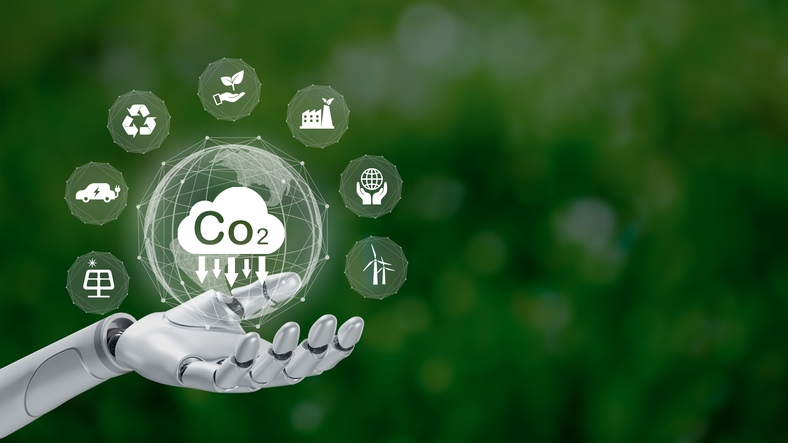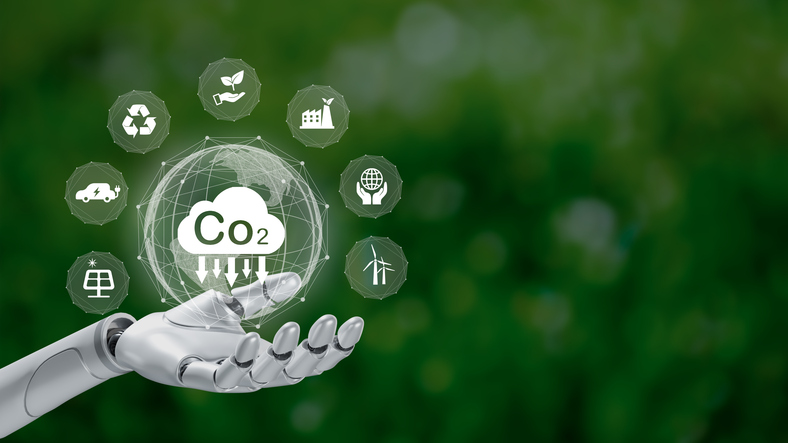
AI for Environmental Monitoring: Powerful Climate Change Solutions
Climate change is one of the biggest challenges humanity has ever faced. From melting glaciers and rising sea levels to extreme weather events and widespread biodiversity loss, its impacts are being felt across the globe. But what if we had a powerful new ally in this fight? Enter Artificial Intelligence (AI) – a technology that’s rapidly becoming a game-changer in how we understand, monitor, and respond to our planet’s changing climate.
This article will explore how AI is revolutionizing environmental monitoring and offering innovative solutions to tackle climate change, all explained in an easy-to-understand way.
Understanding the Climate Crisis: Why Monitoring Matters
Before we dive into AI, let’s briefly grasp the scale of the climate crisis. Our planet’s climate is changing at an unprecedented rate, largely due to human activities like burning fossil fuels, deforestation, and industrial processes. This releases greenhouse gases into the atmosphere, trapping heat and causing global warming.
To effectively combat this, we need:
- Accurate Data: Knowing exactly what’s happening, where, and how quickly.
- Early Warning Systems: Predicting problems before they become disasters.
- Smart Solutions: Developing efficient ways to reduce emissions and protect ecosystems.
This is where traditional monitoring methods often fall short. They can be slow, expensive, limited in scope, and struggle to process the sheer volume of environmental data available today. This is precisely where AI steps in.
What is AI and Why is it Our Environmental Superpower?
Artificial Intelligence (AI) refers to computer systems designed to perform tasks that typically require human intelligence. This includes things like learning from data, recognizing patterns, making decisions, and even understanding language. Think of it as teaching computers to "think" and "learn" like us, but much, much faster and with access to far more information.
Within AI, Machine Learning (ML) is a key component. ML allows computers to learn from data without being explicitly programmed. For environmental monitoring, this means feeding vast amounts of sensor readings, satellite images, and historical climate data into AI models. The AI then "learns" to identify trends, anomalies, and predict future outcomes.
Why is AI an environmental superpower?
- Data Overload Solver: Our planet generates mind-boggling amounts of data every second (from satellites, ground sensors, weather stations, etc.). AI can process and make sense of this "big data" far more efficiently than humans ever could.
- Pattern Recognition: AI can spot subtle patterns and connections in data that might be invisible to the human eye, helping us understand complex environmental processes.
- Predictive Power: By analyzing past and present data, AI can forecast future trends, from weather events to pollution levels.
- Automation & Efficiency: AI can automate repetitive monitoring tasks, freeing up human experts to focus on more complex problem-solving.
- Global Scale: AI can analyze data from across the entire planet, providing a comprehensive, real-time view of environmental changes.
How AI is Revolutionizing Environmental Monitoring: Real-World Applications
Let’s look at specific ways AI is being put to work to monitor our environment and find solutions for climate change.
1. Monitoring Deforestation and Land Use Change
Deforestation is a major contributor to climate change, releasing stored carbon into the atmosphere and destroying vital ecosystems.
- The Problem: Tracking illegal logging and forest degradation across vast, remote areas is incredibly difficult for humans.
- AI’s Solution:
- Satellite Imagery Analysis: AI models can analyze high-resolution satellite images in real-time, detecting changes in forest cover, identifying logging roads, and even spotting illegal mining operations.
- Early Warning Systems: By continuously monitoring, AI can alert authorities to potential deforestation events as they happen, allowing for quicker intervention.
- Carbon Sequestration Tracking: AI helps estimate how much carbon forests are absorbing, providing crucial data for conservation efforts.
2. Tracking Ocean Health and Marine Life
Our oceans are critical for regulating climate, absorbing carbon, and supporting immense biodiversity. They are also under threat from warming, acidification, and pollution.
- The Problem: The ocean is vast and largely unexplored, making comprehensive monitoring a huge challenge.
- AI’s Solution:
- Underwater Sensor Networks: AI processes data from buoys, underwater drones, and smart sensors that measure temperature, pH levels, oxygen, and pollution.
- Marine Life Tracking: AI can analyze sonar data, underwater acoustic recordings, and even underwater video to identify and track marine species, monitor their migration patterns, and detect illegal fishing activities.
- Plastic Pollution Detection: AI algorithms can identify and map plastic debris in oceans and rivers from satellite images and drone footage, helping target clean-up efforts.
3. Predicting Extreme Weather and Natural Disasters
Climate change is leading to more frequent and intense extreme weather events like hurricanes, droughts, floods, and wildfires.
- The Problem: Traditional weather forecasting models struggle with the complexity and speed of modern atmospheric changes.
- AI’s Solution:
- Advanced Weather Forecasting: AI can analyze massive datasets from weather stations, satellites, and radar to create more accurate and localized weather predictions, giving communities more time to prepare.
- Disaster Risk Assessment: By combining historical data with real-time conditions, AI can predict areas most vulnerable to floods, wildfires, or landslides, enabling proactive measures.
- Early Warning Systems: AI-powered systems can issue immediate alerts for tsunamis, volcanic eruptions, or severe storms based on seismic activity, ocean sensors, and atmospheric changes.
4. Improving Air and Water Quality Monitoring
Pollution of air and water directly impacts human health and ecosystem stability, and often goes hand-in-hand with climate-altering industrial activities.
- The Problem: Traditional air and water quality checks are often localized and not real-time.
- AI’s Solution:
- Real-time Pollution Maps: AI integrates data from thousands of low-cost sensors in cities and industrial areas to create dynamic, real-time maps of air pollutants (like particulate matter, ozone, and CO2).
- Water Contaminant Detection: AI can analyze sensor data from rivers, lakes, and drinking water systems to detect contaminants like heavy metals, pesticides, or harmful bacteria instantly.
- Source Identification: By analyzing pollution patterns, AI can help pinpoint the exact sources of pollution, allowing regulators to take targeted action.
5. Boosting Smart Agriculture and Resource Management
Agriculture is both affected by and contributes to climate change. Sustainable practices are crucial.
- The Problem: Inefficient use of water, fertilizers, and energy in traditional farming methods.
- AI’s Solution:
- Precision Agriculture: AI analyzes drone imagery, soil sensors, and weather data to advise farmers on the exact amount of water, fertilizer, and pesticides needed for specific areas of a field, reducing waste and emissions.
- Crop Yield Prediction: AI helps forecast crop yields, assisting in food security planning and resource allocation.
- Water Management: AI optimizes irrigation schedules based on real-time weather and soil moisture data, conserving precious water resources.
- Livestock Monitoring: AI can monitor the health and behavior of livestock, improving animal welfare and reducing the environmental footprint of farming.
6. Enhancing Biodiversity Conservation
Climate change is causing a rapid decline in biodiversity. Protecting species and their habitats is vital.
- The Problem: Tracking thousands of species across vast, remote areas is incredibly resource-intensive.
- AI’s Solution:
- Wildlife Monitoring: AI-powered cameras can identify individual animals, track their movements, and even detect poaching activity in real-time. Acoustic sensors can identify species by their sounds.
- Habitat Mapping: AI analyzes satellite data to map and monitor critical habitats, helping conservationists identify areas most in need of protection or restoration.
- Species Distribution Prediction: AI models can predict how climate change will affect the distribution of species, informing conservation strategies.
7. Optimizing Renewable Energy Systems
Transitioning to renewable energy sources like solar and wind is essential for reducing greenhouse gas emissions.
- The Problem: The intermittent nature of renewables (sun doesn’t always shine, wind doesn’t always blow) makes integrating them into the grid challenging.
- AI’s Solution:
- Energy Demand Forecasting: AI can predict energy demand much more accurately, allowing utilities to balance supply and demand more efficiently and reduce reliance on fossil fuels during peak times.
- Renewable Energy Output Prediction: AI analyzes weather patterns to forecast solar power generation and wind turbine output, optimizing grid stability and energy storage.
- Smart Grids: AI helps manage complex energy grids, directing power where it’s needed most and minimizing waste.
The Bigger Picture: Benefits of AI in Climate Solutions
Beyond the specific applications, AI offers overarching benefits for our climate efforts:
- Faster, More Accurate Data: Provides insights in hours or minutes that would take humans weeks or months.
- Early Warning Systems: Shifts us from reacting to disasters to proactively preventing or mitigating them.
- Smarter Decisions: Equips policymakers, scientists, and communities with data-driven insights for more effective climate strategies.
- Cost-Effectiveness: Automating tasks and optimizing resource use can lead to significant cost savings in the long run.
- Global Reach: Enables comprehensive monitoring and analysis across the entire planet, fostering international collaboration.
Challenges and Considerations for AI in Environmental Monitoring
While AI offers immense promise, it’s not a magic bullet. There are important challenges to address:
- Data Quality and Bias: AI is only as good as the data it learns from. If data is incomplete, biased, or inaccurate, AI can produce flawed results.
- Energy Consumption: Training and running complex AI models require significant computing power, which consumes energy. Efforts are underway to make AI more energy-efficient.
- Accessibility and Digital Divide: Not all countries or communities have equal access to the technology, infrastructure, or expertise needed to deploy advanced AI solutions.
- Ethical Concerns: Issues like data privacy, surveillance, and the potential for misuse of AI need careful consideration and regulation.
- The "Black Box" Problem: Sometimes, it can be hard to understand exactly how an AI made a particular decision, which can be a concern in critical environmental applications.
Addressing these challenges requires careful planning, ethical guidelines, and international cooperation to ensure AI benefits everyone and truly helps our planet.
The Future is Now: AI and Human Collaboration
AI is not here to replace human scientists, conservationists, or policymakers. Instead, it’s a powerful tool that amplifies human capabilities. When humans and AI work together, we can achieve far more than either could alone.
- AI provides the insights; humans provide the wisdom.
- AI handles the data crunching; humans make the strategic decisions.
- AI identifies the problems; humans implement the solutions.
The journey to a sustainable future is complex, but with AI as a key partner, we have an unprecedented opportunity to understand our planet better, protect its vital ecosystems, and build a more resilient world in the face of climate change. Investing in AI research, ethical development, and widespread adoption of these technologies is not just an option—it’s a necessity for our collective future.



Post Comment